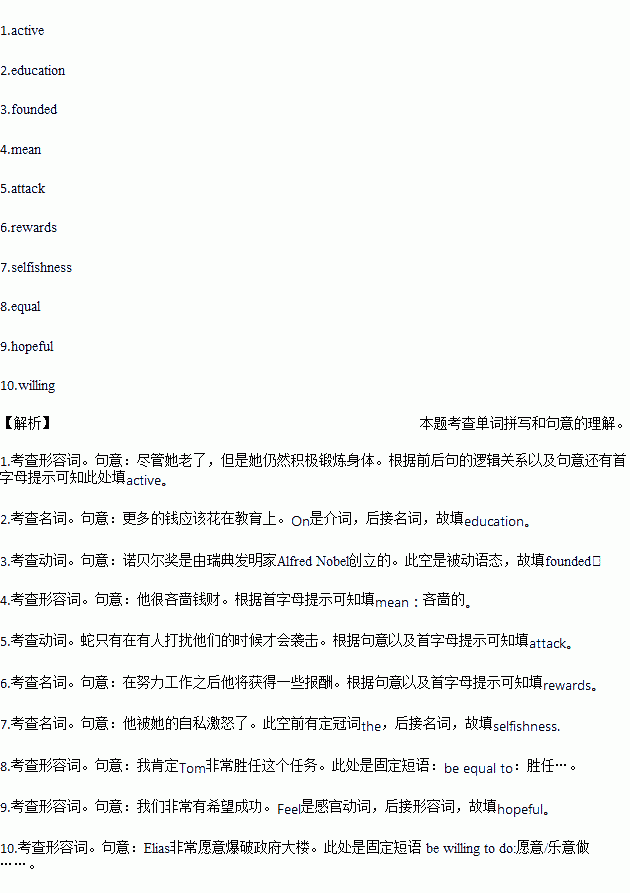题目内容
1.Even though she is old, she is still a________ in physical training.
2.More money should be spent on _______(educate).
3.The Nobel Prize was ______ (found) by Swedish inventor Alfred Nobel.
4.He is very m________ with his money.
5.Snakes will only a________ if you disturb them.
6.He will get some _______(报酬) after working so hard.
7.He was angered by the _________ (selfish) of her.
8.I’m sure Tom is quite________(胜任) to the task.
9.I feel ____(hope) that we shall succeed.
10.Elias was ______(乐意的) to blow up government buildings.
练习册系列答案
 轻松夺冠全能掌控卷系列答案
轻松夺冠全能掌控卷系列答案
相关题目


 elevator.
elevator. At such an old age, she is no longer popular.
At such an old age, she is no longer popular.